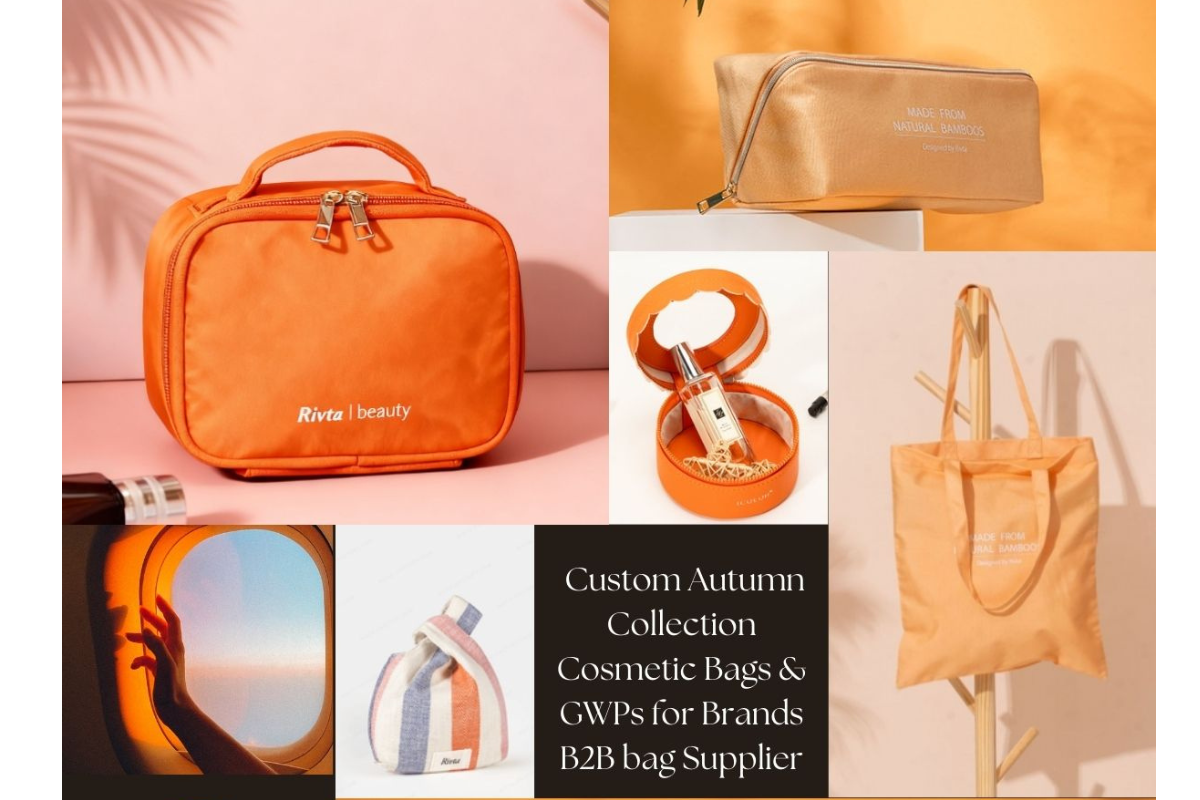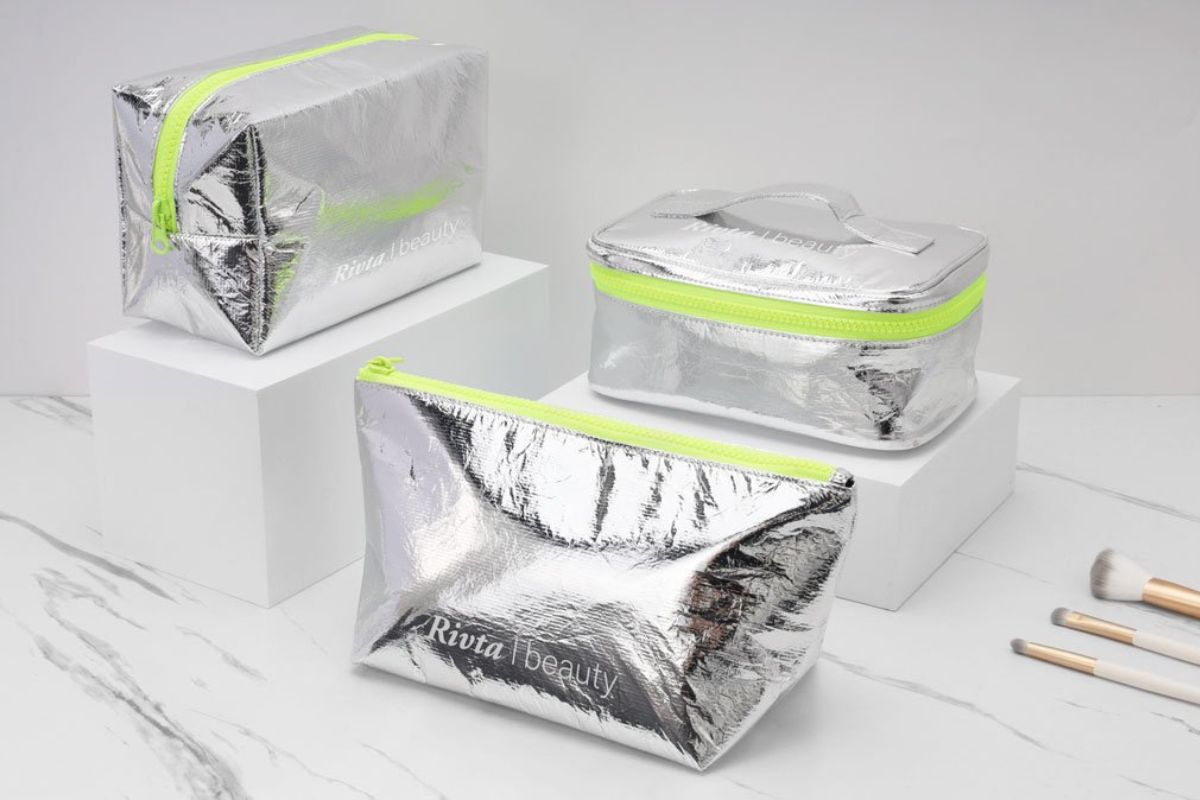The Natural Choice That Sells Itself: How Linen Cotton Bags Transform Your Brand Into a Lifestyle Statement
Consumers today expect brands to reflect their values, and few choices speak sustainability louder than natural fabrics. Linen–cotton bags blend the charm of linen with the softness of cotton, creating a reusable accessory that reinforces a brand's eco-friendly message. Made from flax (linen) and cotton fibers, these bags combine durability, breathability, and a premium feel. They stand out from single-use plastic or synthetic packaging as a visual cue of a brand's commitment to the environment and quality. In Europe, where regulations and shoppers increasingly favor green solutions, switching to linen–cotton bags can help a brand truly sell itself by turning even its packaging into a lifestyle statement.
The positive effect on brand image is two-fold. First, the natural fibers convey care for the planet: flax (used for linen) is a low-input crop that absorbs carbon and even grows on soil unsuitable for food. European flax production is significant – for example, France, Belgium and the Netherlands alone supplied over 64% of the world's linen fiber in 2022. That means a linen-cotton bag labeled "made in Europe" truly reflects local sustainable sourcing. Second, these bags literally become part of customers' daily routines. Unlike flimsy throwaway packaging, a well-designed linen–cotton pouch or tote gets reused for groceries, gym clothes, travel kits or daily carry, acting as a mobile billboard for the brand. Every time a customer pulls the branded bag from their car trunk or shoulder, they silently signal to others that your brand is eco-conscious. Over time, this builds trust and loyalty – consumers are 73% more likely to pay extra for products that align with sustainability values.
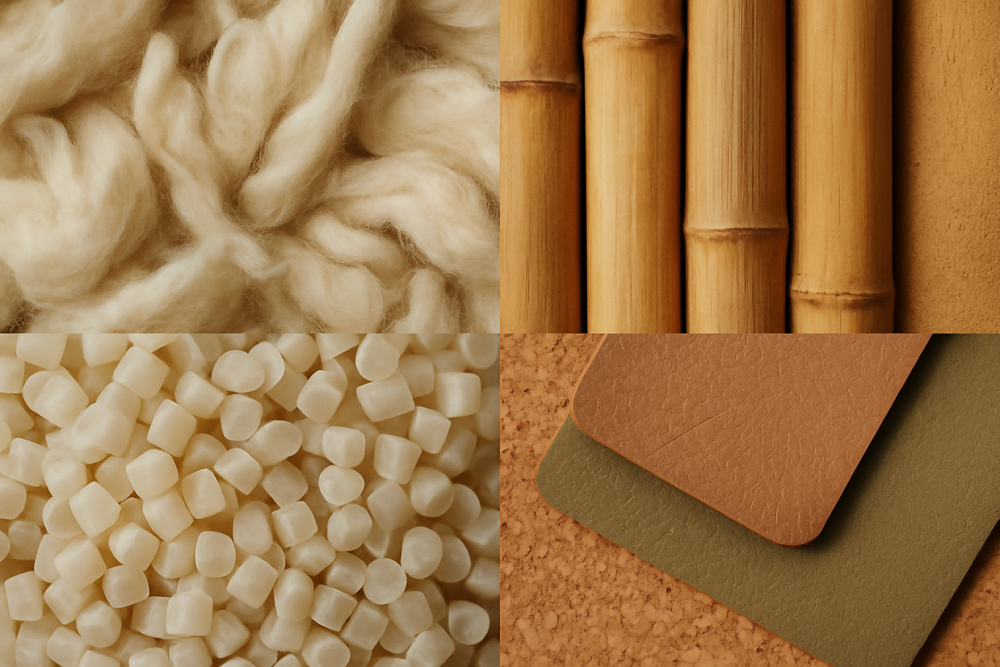
Embracing Natural Fabrics: Linen vs. Cotton
Both linen and cotton are ancient textiles, but they bring different strengths. Linen comes from flax stalks and is famed for strength and breathability. Cotton (and cotton blends) is softer to the touch. When combined, a linen–cotton bag can be both sturdy and pleasant, making it ideal for high-end gift or cosmetic packaging. Importantly for brands, these fabrics have excellent environmental credentials. Linen requires far less water and fewer pesticides than cotton, and flax plants can even help sequester carbon in the ground. In contrast, conventional cotton can be water-intensive; shifting to organic cotton in a blend further cuts waste and chemicals.
The practical differences can be summarized as follows:
| Material | Durability & Feel | Sustainability | Typical Uses |
|---|---|---|---|
| Linen | Very high strength and long fibers; naturally textured and cool to the touch. Stiffer hand. | Grows quickly on marginal land, absorbs carbon, little irrigation needed. Biodegradable. | Premium packaging, high-end totes, summer accessories. |
| Cotton (organic) | Soft and flexible; less prone to wrinkling in blends. | If organic, grown without GMOs or harsh chemicals, 62% less energy and 91% less water than regular cotton. Renewable. | Everyday bags, casual totes, general retail packaging. |
| Linen–Cotton Blend | Balanced: retains linen's strength with added softness. | More durable than pure cotton, more refined than pure linen. Renewable, biodegradable. | Versatile cosmetic pouches, gift bags, totes that look natural yet polished. |
Studies confirm these traits: linen's fibers are longer and stronger than cotton's, making linen goods naturally longer-lasting. Even washed many times, linen maintains shape better, while cotton becomes softer with each wash. Both fabrics are breathable, but linen especially wicks moisture and dries faster, which is why it resists mustiness. In practical terms, a linen–cotton makeup bag or travel pouch can survive years of use and machine washes, which means the brand logo or design on it continues to be seen. This longevity also means fewer replacements – a single quality linen bag can replace dozens of single-use plastic or paper bags, reducing waste overall. By choosing linen cotton, a brand literally stands behind a "no-waste" promise.
European consumers notice these qualities. A 2024 industry report highlights that half of EU shoppers now prefer brands committed to eco-friendly products and practices. Offering packaging made of natural fibers aligns perfectly: it signals that your company takes action, not just makes empty claims. In fact, cosmetics players are increasingly focusing on all steps of their supply chains for sustainability. Major beauty companies and retailers now seek transparency in sourcing and even packaging, driving suppliers to adopt green materials. By using linen–cotton bags, a brand becomes part of this transparent, responsible trend.
Material Innovation: Beyond Basic Linen Cotton
While linen–cotton blends are themselves an innovation combining two classics, cutting-edge brands are going further. Today's eco-conscious market sees a wave of new natural fibers and recycled materials for luxury packaging. For example, pineapple leather (Piñatex) and banana fiber (from agricultural waste) can accent or line bags for a premium vegan feel. Lyocell, derived from eucalyptus, adds a silky smooth interior or decorative panel, produced in a closed-loop system. Even common materials are being upgraded: recycled cotton or RPET (plastic bottle resin) can be mixed in to boost durability while cutting waste.
Material science also brings functionality. Linen can be treated with eco-friendly coatings to make it water-resistant, ideal for travel or toiletry bags. Some manufacturers use soy- or plant-based leather substitutes on the outside, with linen-cotton exteriors – giving that natural look plus a smooth surface for printing or embossing a logo. Others incorporate features like cork zipper pulls or natural bamboo handles for an artisanal touch. These combinations still align with sustainability because all components remain biodegradable or recycled.
The main takeaway is that linen–cotton need not mean "rustic only." European sensibilities often favor minimalistic, clean looks. Linen woven in a tight, fine pattern can be quite sleek, or it can be quilted or printed for texture. The manufacturer can help clients source custom textiles: for example, fabric blends with a hint of organic cotton for softness, or even small amounts of recycled polyester for water-beading without sacrificing biodegradability. In all cases, these innovations aim to maximize utility while keeping the carbon footprint low. A recent Nielsen survey shows 73% of global consumers now expect brands to offer greener products, and are even willing to pay a premium for them. Investing in innovative linen–cotton solutions is therefore not just trendy—it's business-savvy.
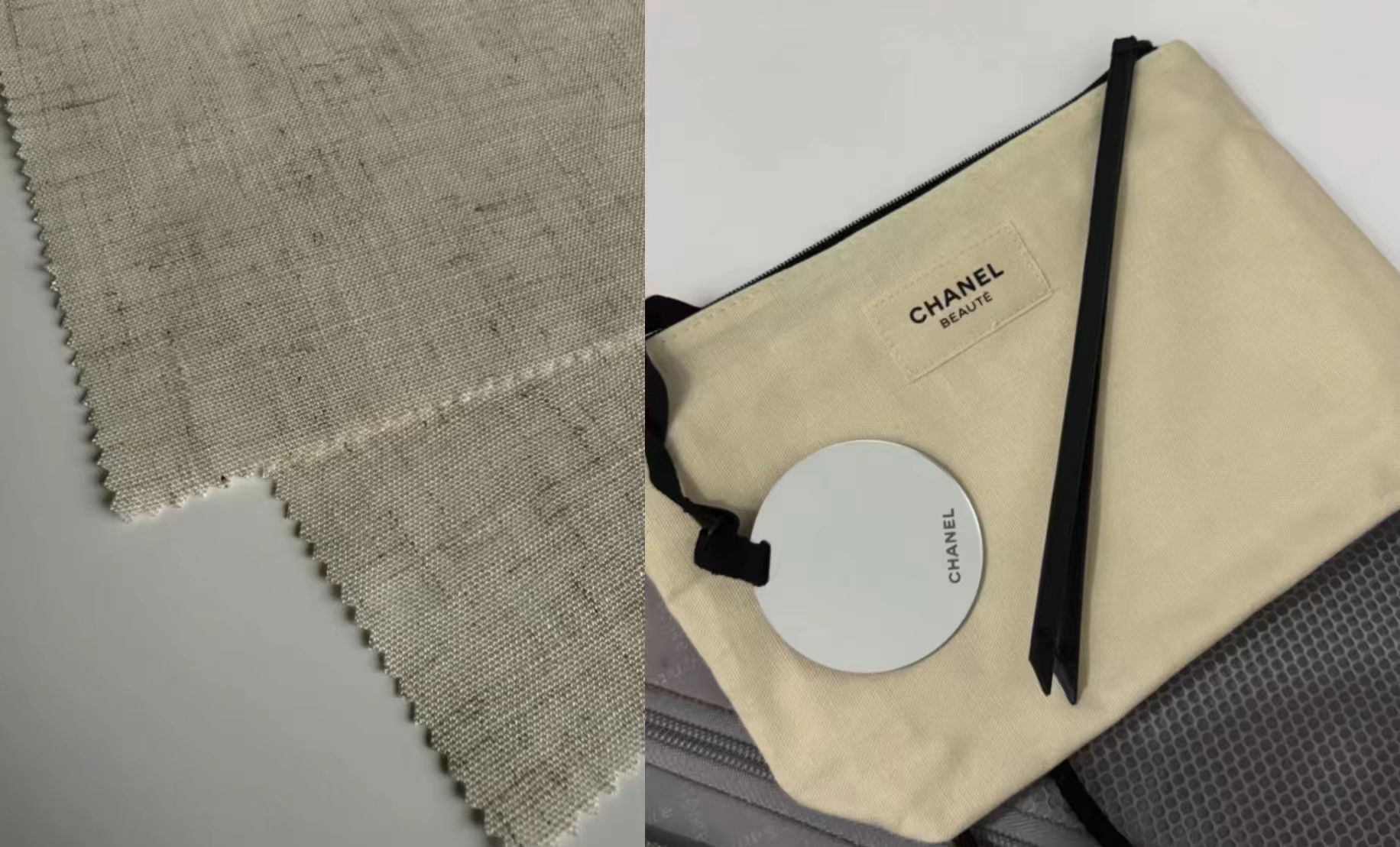
Industry Adaptability: Meeting Diverse Market Requirements
The versatility of linen cotton bags makes them suitable across various beauty industry segments, each with unique requirements and challenges. Understanding these applications helps brands make informed decisions about how this material choice supports their specific market positioning.
In the skincare sector, linen cotton's natural breathability provides functional benefits beyond aesthetics. Products containing active ingredients often benefit from packaging that allows air circulation while protecting from light and moisture. The natural antimicrobial properties of both linen and cotton create an environment that helps maintain product integrity during storage and transport.
For color cosmetics, the neutral tones and sophisticated texture of linen cotton provide an ideal backdrop that doesn't compete with product presentation. The material's ability to maintain its appearance through repeated handling makes it particularly suitable for professional makeup artists who require packaging that maintains a premium appearance throughout extensive use.
The hair care segment has embraced linen cotton bags particularly enthusiastically, especially for salon-quality products. The material's association with luxury textiles creates an immediate connection to the hair care experience, while the practical benefits of durability and washability make these bags valuable tools for both professionals and consumers.
Beauty Industry Segment Applications
| Segment | Applications |
|---|---|
| Skincare Products | ● Serums and treatments requiring breathable storage ● Gift sets and seasonal collections ● Travel-sized product bundles |
| Color Cosmetics | ● Brush storage and transport ● Limited edition collections ● Professional artist kits |
| Hair Care | ● Salon-quality product presentation ● Travel and gym bags ● Professional tool storage |
Aligning with Market and Regulatory Trends
European markets have become a litmus test for sustainability. Consumers of all ages in Europe now place a much higher importance on ethical production and green practices than they did a decade ago. "Clean beauty" and green living are mainstream. In fact, 93% of Europeans are engaging with eco-friendly beauty products. This shift extends beyond product formulas to packaging. Regulatory changes underscore this: the EU's new Packaging and Packaging Waste Regulation will require 100% recyclable packaging by 2030. For export-oriented brands, these rules function as a de facto global standard.
Against this backdrop, choosing linen–cotton bags is both compliant and proactive. Natural fiber bags are inherently recyclable and biodegrade, meeting strict European criteria. They avoid microplastics entirely. In addition, using reusable bags can support waste-reduction goals in campaigns and marketing: for example, some brands run "bring your own bag" promotions, and a custom linen bag is the ultimate such giveaway. It's not just about the legal angle though. Data shows that 50% of EU consumers now prefer eco-friendly brands, and they actively look for certifications or visible signs of sustainability. Even if you don't advertise a specific eco-certificate, a natural fiber bag sends a clear message that can win over these shoppers.
In short, linen–cotton bags help future-proof your business. They directly answer customer demand for transparency and responsibility. When beauty or lifestyle brands showcase eco-packaging on social media, it resonates: eco-friendly packaging often goes viral on Instagram or TikTok simply because it feels good to share a "green" purchase. A natural bag has substance behind its style.
Industry Adaptability and Use Cases
While our specialty is eco-friendly cosmetic bags, linen–cotton designs cross industry lines. Here are some prime B2B opportunities:
●Cosmetics and Personal Care: A perfect match. The clean, organic look of linen cotton complements skincare, makeup and wellness lines. Many high-end beauty brands provide a gift-with-purchase or deluxe sample in a reusable pouch. Turning that pouch into linen cotton elevates it from promo item to premium accessory. Imagine a sunscreen kit in a beachy linen pouch that customers actually keep for their next vacation.
●Travel and Hospitality: Linen cotton bags make excellent travel kits. Hotels and resorts seeking a "green" image might include such bags in room packages or spa kits. They can double as laundry bags or shoe bags, advertising the hotel or resort logo while serving a practical purpose.
●Fashion and Retail: Clothing and accessory brands can use linen–cotton shopping bags or garment dust covers. They convey that the brand cares about luxury beyond the product. For example, a boutique might offer clothing in a linen garment bag instead of plastic. Or a leather goods store could use a linen-drawstring dust pouch for each handbag.
●Food and Beverage: High-end tea or gourmet gift brands sometimes offer a linen bag filled with loose tea or treats. Because linen protects from dust and is breathable, it's practical for products like herbs, coffee beans or artisanal bread. Custom-printed linen sacks are an upscale alternative to paper.
●Events and Corporate Gifts: Linens cotton totes or backpacks serve as premium corporate gifts or event swag. Think of a European tech conference giving attendees a linen backpack with company branding – it immediately sets the organizer apart as eco-minded.
In every case, the adaptability is key. A linen–cotton toiletry bag for a cosmetics firm might differ little from one used for a corporate gift, save for colors or labels. As a manufacturer, we work with clients across Europe to tailor the same basic designs for different markets. For example, the Netherlands-based tanning brand (or any local retailer) could order a small batch with a tulip pattern and our signature logo; a German organic spa chain might choose linen embroidered with a pine tree and their name. The underlying structure – a zipper pouch or tote – can remain constant.
Another advantage for businesses: sourcing from a medium-scale factory like ours ensures flexibility. We can handle both small runs for boutique brands and larger orders for retail chains. Our production has enough capacity to innovate (trial new fabric blends or dyes) without major delays. We also assist in compliance: while we aren't a certification body, we use eco-friendly processes (like water-based printing and Oeko-Tex fabrics) so our clients can align with EU standards on textiles and labor practices. We even provide documentation on material origins for peace of mind.
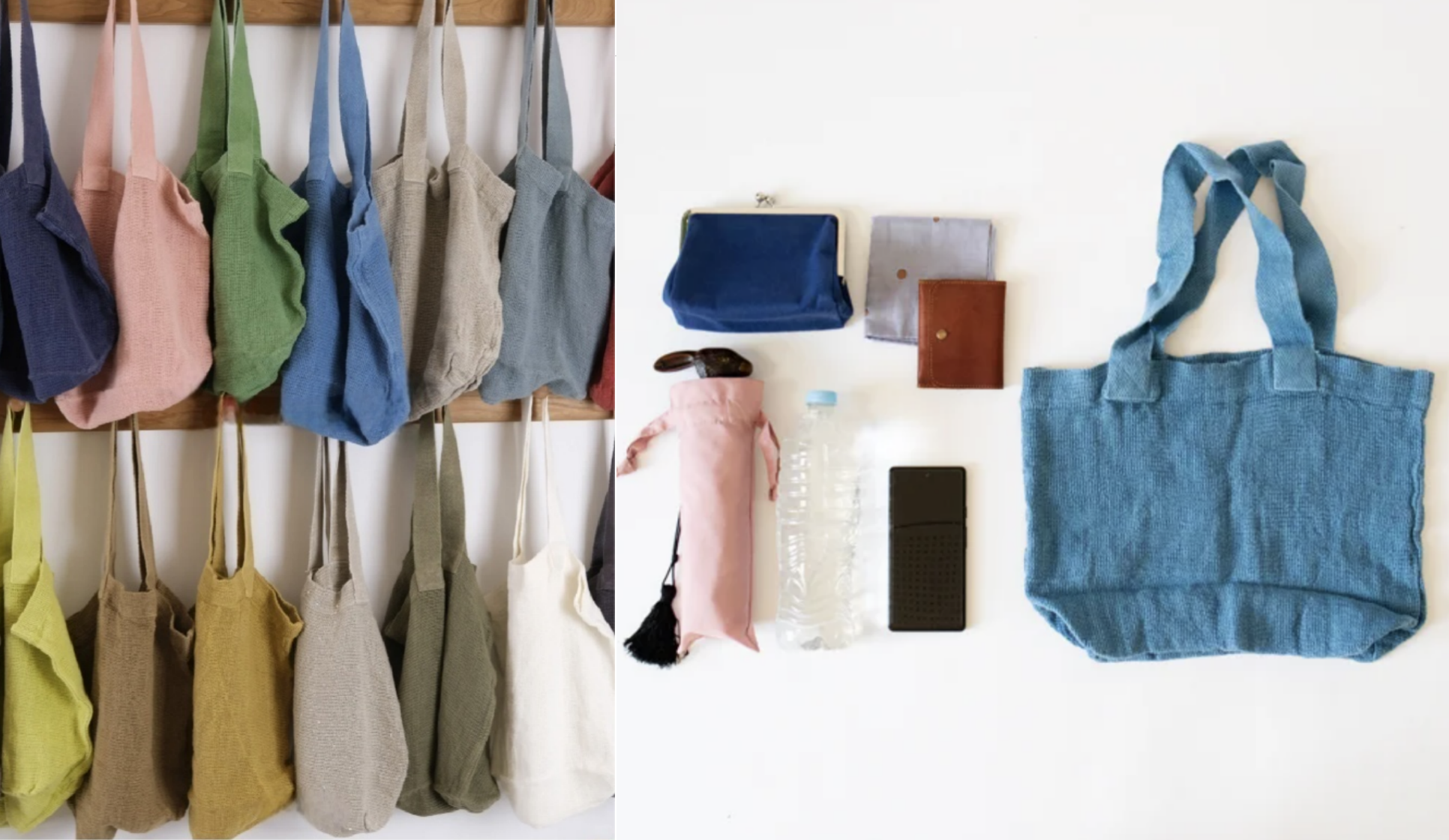
Innovation in Linen Cotton Applications
Recent developments in linen cotton processing have opened new possibilities for innovative packaging applications. Advanced weaving techniques now allow for varying densities within single pieces, creating bags with reinforced stress points while maintaining overall softness and flexibility.
Integrated closure systems represent another area of innovation. Natural fiber cordage systems, wooden toggle closures, and even magnetic snap systems hidden within fabric layers create functional closures that maintain the organic aesthetic while providing secure product protection.
Multi-compartment designs have become increasingly popular for comprehensive beauty kits. The breathability of linen cotton makes it suitable for storing different product types within the same bag without cross-contamination concerns.
Surface treatments using natural oils and waxes can enhance water resistance while maintaining breathability. These treatments create packaging suitable for bathroom environments without compromising the material's natural characteristics.
Natural Materials as Brand Strategy
The evolution of linen cotton bags from simple packaging to strategic brand tools reflects broader changes in consumer expectations and market dynamics. For beauty brands serving sophisticated European markets, these materials offer a combination of functional benefits, environmental responsibility, and premium positioning that traditional alternatives cannot match.
The decision to adopt linen cotton packaging represents more than a materials choice—it signals a brand's commitment to values that increasingly drive consumer loyalty. As we continue to work with brands navigating this transition, we observe that successful implementation requires understanding both the technical capabilities and the cultural significance of natural materials.
The future belongs to brands that can seamlessly integrate sustainability with luxury, functionality with aesthetics, and environmental responsibility with commercial success. Linen cotton bags provide a tangible way to achieve this integration while creating packaging experiences that customers actively seek to preserve and reuse.
For beauty brands ready to transform their packaging from a necessary expense into a powerful brand asset, linen cotton represents not just a material choice, but a pathway to authentic differentiation in an increasingly conscious marketplace.

